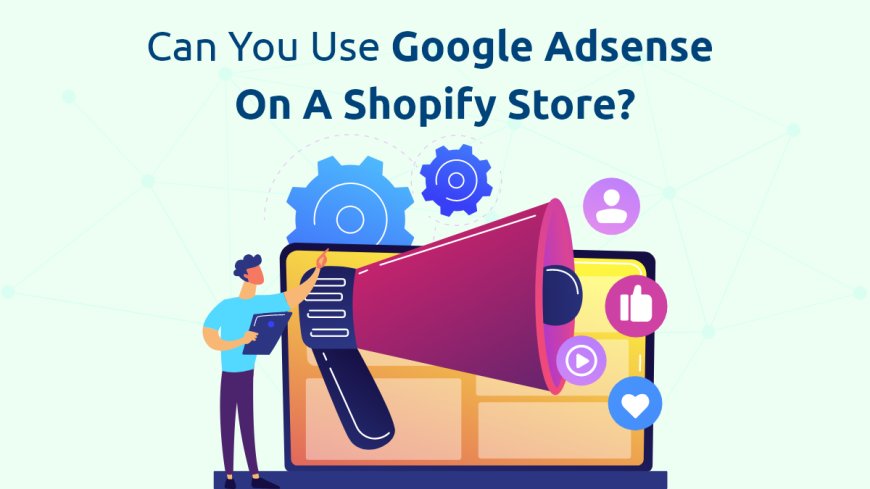Can You Use Google AdSense on a Shopify Store?
Discover how to maximize your Shopify store revenue with Google AdSense Shopify. Learn step-by-step strategies to integrate AdSense seamlessly on your online store today!

If you’re considering monetizing your Shopify store, you might be wondering about the best strategies to generate additional income. One popular method is Google AdSense, a program that allows website owners to display ads on their sites and earn money when visitors click on these ads. Learn how to monetize your Shopify store with Google AdSense. Discover the step-by-step process to set up Google AdSense Shopify on your Shopify store and start earning money today! In this blog post, we’ll explore whether you can use Google AdSense on a Shopify store, the benefits of doing so, and how to implement it effectively.
Understanding Google AdSense
What is Google AdSense?
Google AdSense is an advertising program that enables website owners to display ads on their sites and earn revenue through clicks and impressions. Advertisers pay Google to display their ads, and Google shares a portion of that revenue with publishers, making it a popular choice for bloggers and website owners looking to monetize their traffic.
How Does Google AdSense Work?
AdSense works by placing contextual ads on your website based on the content of your site and the interests of your visitors. When a user clicks on an ad, you earn a small commission. The amount you earn can vary based on factors such as the type of ad, the niche, and the traffic source.
Can You Use Google AdSense on Shopify?
The Compatibility of Google AdSense and Shopify
The short answer is yes; you can use Google AdSense on a Shopify store. However, there are some considerations to keep in mind before implementing it. While Shopify primarily focuses on e-commerce, it does allow for the integration of ad networks like Google AdSense.
Shopify's Policy on Ads
Shopify encourages store owners to find new ways to drive traffic and revenue. Using Google AdSense can be an effective method to monetize your site alongside your product sales. However, you must adhere to both Google’s policies and Shopify’s guidelines to ensure a seamless integration.
Benefits of Using Google AdSense on Your Shopify Store
Additional Revenue Stream
One of the primary benefits of using Google AdSense is the potential for an additional revenue stream. While you earn money through product sales, AdSense can provide income from visitors who may not purchase anything but still engage with your site by clicking on ads.
Monetize Traffic from Non-Customer Visitors
Your Shopify store might attract traffic from users who are not necessarily looking to make a purchase. For example, if you have a blog section on your site or provide valuable resources, users might visit for that content. AdSense allows you to monetize this traffic effectively.
Easy to Set Up and Manage
Setting up Google AdSense is relatively straightforward. Once you create an account and get approved, you can generate ad codes and place them on your Shopify store. The dashboard allows you to manage ads, track earnings, and analyze performance, making it user-friendly even for those who are not tech-savvy.
How to Set Up Google AdSense on Your Shopify Store
Step 1: Create a Google AdSense Account
Before you can start displaying ads, you’ll need to sign up for a Google AdSense account. Go to the Google AdSense website and click on "Sign Up Now." Fill in the required information, including your website URL and payment details. Once your application is submitted, Google will review it, which may take a few days.
Step 2: Get Approved
After submitting your application, you’ll need to wait for Google to approve your account. This process may take anywhere from a few hours to a few days. Google will review your Shopify store to ensure it complies with their policies, so make sure your store is well-structured and follows their guidelines.
Step 3: Generate Ad Codes
Once you’re approved, log in to your AdSense account and navigate to the "Ads" section. Here, you can create ad units by selecting the ad type, size, and style. After customizing your ad unit, Google will provide you with a piece of code.
Step 4: Add Ad Codes to Your Shopify Store
To integrate the ad codes into your Shopify store, follow these steps:
- Log in to your Shopify admin panel.
- Navigate to “Online Store” and then “Themes.”
- Click on “Actions” and select “Edit Code.”
- Depending on where you want to display your ads (e.g., header, footer, or within content), open the relevant file, such as theme.liquid, header. liquid, or footer. liquid.
- Paste the ad code into the HTML where you want the ad to appear. Save your changes.
Step 5: Monitor Performance
After integrating the ads, monitor their performance using the Google AdSense dashboard. This dashboard will provide insights into clicks, impressions, and revenue. Regularly analyzing this data allows you to optimize your ad placements and improve your overall earnings.
Best Practices for Using Google AdSense on Your Shopify Store
Placement Matters
Ad placement can significantly impact your revenue. Experiment with different placements to find the optimal positions for maximum visibility and engagement. Ads placed above the fold (the part of the webpage visible without scrolling) often perform better.
Avoid Clutter
While it may be tempting to display many ads, too much clutter can overwhelm visitors and detract from the shopping experience. Aim for a balanced layout that promotes your products while still incorporating ads.
Comply with Policies
Ensure that your Shopify store complies with Google AdSense policies, including content guidelines and ad placement rules. Violating these policies can result in account suspension or termination, so it's essential to familiarize yourself with the guidelines and maintain compliance.
Focus on Quality Content
If your Shopify store includes a blog or resource section, focus on creating high-quality content that attracts visitors. Engaging content can lead to more clicks on your ads and improve your overall earnings.
Potential Drawbacks of Using Google AdSense on Shopify
Ad Blockers
A significant number of users employ ad blockers, which can limit the number of impressions your ads receive. This could impact your earnings, especially if a large portion of your audience uses ad-blocking software.
Distraction from Sales
While ads can generate additional revenue, they may also distract users from making purchases. It’s essential to strike a balance between monetizing your store and ensuring that users remain focused on shopping.
Revenue Variability
AdSense earnings can be unpredictable and depend on various factors such as traffic, ad performance, and seasonal trends. Relying solely on AdSense for income may not provide the financial stability you desire for your Shopify store.
Conclusion
Using Google AdSense on your Shopify store can be a valuable strategy for generating additional revenue. By following the steps outlined in this guide and implementing best practices, you can successfully integrate ads into your store and create a new income stream.
However, it's essential to keep in mind the potential drawbacks, such as ad blockers and distractions from sales. Balancing your ad placements with the overall user experience is key to maintaining customer engagement while monetizing your store effectively.
By leveraging the power of Google AdSense thoughtfully, you can enhance your Shopify store's profitability while providing valuable content to your visitors. Discover how to monetize your Shopify store effectively with Google AdSense. Explore the benefits of using Shopify mobile app builder for increased revenue. If done correctly, this approach can lead to a win-win scenario where both your audience and your business benefit.
What's Your Reaction?























